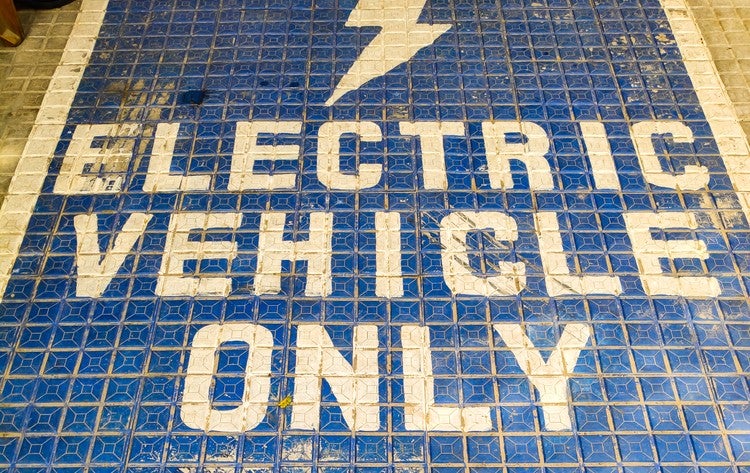
The transition from internal combustion engine (ICE) vehicles to electric vehicles (EVs) in the UK and Europe is encountering significant obstacles, leading to a stagnation in sales. Despite government efforts to drive this shift through stringent emissions targets and incentives, consumers have been slow to embrace EVs, says Eva Kellershof, Vice-President of Sales for North America and Europe at NETSOL Technologies ahead of her talk at the Motor Finance Europe Conference 2024 in Frankfurt on 17 October.
UK and European sales of internal combustion engine vehicles (ICE) and EVs have stagnated this year. “Consumers simply aren’t adopting EVs as quickly as governments had hoped,” notes Kellershof of NETSOL, a global software and services provider for the asset finance and leasing sector.
This has placed significant pressure on a key metric for lessors: residual value (RV). RV predicts a vehicle’s future worth at the end of its lease, influencing lease pricing — higher RVs result in lower monthly payments for consumers — and serving as a crucial risk management tool for finance firms. Accurately forecasting RVs underpins leasing companies’ profitability, guiding decisions on resale or re-leasing.
However, the green vehicle transition, driven by government initiatives, is rendering traditional RV models increasingly unreliable. Manufacturers, facing stringent CO2 emissions regulations, are struggling to translate this regime into attractive vehicle offerings, Kellershof explains.
The transition is also complicated by technological factors. Battery health, a major variable in EV RV calculations, introduces a new layer of complexity. Battery condition depends on various factors, from the model to individual driving history, making RV estimations more challenging. Advances in battery technology have only worsened the issue by devaluing older EVs with outdated technology.
Kellershof says information collected from telematics in EVs is transforming how RVs are determined. While traditional methods rely on historical market data — such as mileage, vehicle age, and condition assessments — telematics offers real-time, detailed data for a more dynamic approach to gathering data on a vehicle’s usage and driver behaviour. Some lenders and funders in this space are “invested in ‘active asset management’, and are increasingly looking to draw on wider data sets to enhance their RV forecasts,” Kellershof adds.

Infrastructure
From an infrastructure perspective, disparities in access to affordable and convenient charging facilities persist. Kellershof points out that the best rates are available to those with off-street parking for overnight charging, an option not available to much of the mass market. Moreover, material costs for EV batteries have yet to stabilise, impeding price parity with ICE vehicles. In the US, the average price gap between a compact SUV ICE and its EV counterpart stands at 32.6%, according to a recent analysis by Edmunds cited by Kellershof.
Despite OEMs restructuring their fleets to produce more hybrids and EVs, weak demand has forced them to cut manufacturer’s suggested retail prices (MSRP) to stimulate sales. “For anyone who bought an EV earlier, seeing the MSRP drop means watching their vehicle’s RV fall in real-time,” Kellershof notes.
This confluence of factors has delayed the consumer transition to EVs and left the industry with a surplus of vehicles they cannot sell.
CO2 regime
Normal market operations have been disrupted by the development of charging infrastructure and the EU’s CO2 emissions regime, both beyond market control, Kellershof says.
By 2025, automakers in the UK and EU must reduce average fleet emissions to 95 grams of CO2 per kilometre. Industry observers warn that failure to meet this target could result in fines of up to €15 billion across the EU. Automakers are lobbying for regulatory relief, with groups like the ACEA in the EU calling for a two-year delay to the 2025 target.
Agreement on this issue is far from universal, the Brussels-based green lobby group Transport & Environment has urged the EU to reject what it describes as the “absurd demands of car manufacturers” to delay emissions targets.
The BVRLA in the UK has raised concerns about the falling values of used EVs, which have dropped by 50%, prompting a call for immediate government intervention to stabilise the market. As vehicle values decline, lease rates for new EVs are rising, as companies attempt to offset potential losses. The BVRLA warns of a vicious cycle, with a predicted influx of second-hand EVs further depressing values, ultimately affecting new EV sales.
Oxford Economics forecasts that by 2027, the fall in used EV values could result in 300,000 fewer new EVs being sold in the UK.
Many consumer concerns about EVs — such as battery degradation, range anxiety, and insufficient infrastructure — are constantly improving. Kellershof points to Tesla’s recent expansion of its Supercharging network in the US and Ford’s decision to adopt the North American Charging Standard (NACS) in 2025, based on Tesla’s technology. Chinese EV manufacturer Xpeng launched the Mona M03 in August, its mass-market passenger car with a driving range of 620km for its top model. Furthermore, under EU regulations and the US Inflation Reduction Act, charging infrastructure is set to expand, which will likely boost consumer confidence in the long term, says Kellershof.

US, EU & China
Politicisation also plays a significant role in shaping the future of EV adoption, especially in the US, says Kellershof.
On the surface, US presidential candidate Donald Trump appears closely aligned with the fossil fuel industry, while Kamala Harris is more closely associated with Biden’s Inflation Reduction Act and its federal subsidies for EV purchases. However, it remains uncertain whether Trump would pursue an anti-EV agenda if elected, says Kellershof. She points to Trump’s August interview with Reuters, where he floated the idea of appointing Tesla CEO Elon Musk as an adviser. “If Trump does include Musk in his administration, as he suggested, Musk will likely advocate for increased EV adoption,” Kellershof notes.
Regardless of their rhetoric, both a Trump or Harris administration would ultimately need to contend with the industry and the public’s growing acceptance of EVs. The bigger and more immediate challenge, however, lies in addressing the competitive threat from Chinese-made EVs, says Kellershof.
A new concern has emerged that Chinese EV manufacturers, currently barred from the US market by 100% tariffs, could leverage production facilities in Mexico to gain indirect access to the US.
According to the Mexican Ministry of Economy, China was Mexico’s largest car supplier last year, exporting $4.6 billion worth of vehicles. From the consumer’s perspective, these vehicles are both reliable and affordable, for example, BYD’s Dolphin Mini, a Tesla competitor, sells in Mexico for just over half the price of Tesla’s cheapest model. Cross-border access is made possible by the United States-Mexico-Canada Agreement (USMCA), a revision of NAFTA that, since 2018, has eliminated tariffs on many goods traded between the three countries. Under the agreement, if a foreign carmaker produces vehicles in Canada or Mexico and sources materials locally, the cars can be exported to the US with minimal tariffs.
Meanwhile, the European Union is set to decide by 30 October whether to increase tariffs on electric vehicles imported from China, though any potential increase would be significantly lower than the US’s heavy tariffs.
In a bid to open markets, Chinese automaker BYD has commenced construction of its first European production plant in Szeged, Hungary, and is collaborating with distributors in 19 EU countries to offer electric and hybrid models. In April, Chery, another Chinese manufacturer, announced a partnership with Ebro EV Motors to produce EVs in Barcelona, Spain. Stellantis, which owns brands like Peugeot, Fiat, and Opel, formed a partnership with China’s Leapmotor in May. Additionally, Zhejiang Geely Holding, which owns Volvo Cars, is exploring potential production sites in Europe.
Concerns over Chinese competition are particularly acute in Germany, where around 40% of jobs are linked directly or indirectly to the auto industry, she says.
As automakers and motor finance companies navigate this complex environment, the industry’s future will hinge on its ability to adapt and respond effectively to these emerging challenges, ensuring that lenders and leasing companies have at their disposal accurate sets of data and tools embedded in their asset management platforms, helping to support sustainable growth in the EV market, Kellershof concludes.
Survival of the fittest: How captives are adapting to a new era of mobility
EV adoption faces market hurdles: declining values and misinformation







